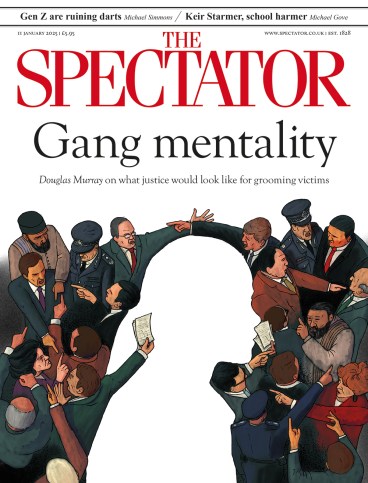
When first considering architects for the new Louvre in 1981, Emile Biasini, the project’s head, liked that I.M. Pei was both ‘Chinese as well as American: Chinese in his respect of the past, and American in the way of radical solutions’. His controversial glass pyramid ignited much debate about which side won out. These entanglements, between traditionalism and modernity, East and West, would come to characterise both Pei’s Louvre and his six-decade career. After a seven-year gestation, the first comprehensive retrospective of the architect, at Hong Kong’s M+ museum, finally offered a longer view.
Despite calling America home, Pei felt a duty to help China find its own architectural language
Pei’s prolific career had a head start. His father was a chief accountant at the Bank of China, so he enjoyed a privileged upbringing, typical of the Chinese elite of the 1920s. He also benefitted from a hybrid schooling – both traditional Chinese and modern western – and grew up between the European-administered international hubs of Hong Kong and Shanghai as his family sought stability and business opportunities amid the civil strife of interwar China.
In 1935 – right before another Japanese invasion – Pei was dispatched to America for an Ivy League education at the University of Pennsylvania before transferring to MIT. Disillusioned with Penn’s classically inflected Beaux-Arts education, it was at MIT where he would solemnise his pact with modernism, voraciously attending guest lectures by Le Corbusier. Pei’s student drawings reflect this process of unlearning: over the years, he dispensed with the symmetry, proportions and art deco flourishes of his New England Aquarium and Wellesley Boston Railroad station for the unembellished functionalism of his Hong Kong Bankers Club.
His undergraduate thesis was definitive proof of his thoroughly modernist belief in architecture as social engineering. In 1940, while witnessing from afar China’s descent into the turmoil of civil (and soon world) war, Pei proposed ‘Standard Propaganda Units’, a kit for the easy construction of bamboo pavilions that could be assembled into theatres, exhibition halls, or forums, recreated in large-scale models for this exhibition. They were to be deployed by central government to host touring displays to educate the fractured and illiterate rural Chinese population, and to unite the nation.
The Soviet influence on modernism is conspicuous here. This was pure agitprop, a term which originally referred to something quite specific: a strategy whereby Bolsheviks harnessed the power of artists and architects to disseminate the revolution nationwide with travelling exhibits. Pei’s thesis captures the moment when architecture shifted from being an aesthetic pursuit to becoming an indispensable instrument for replanning society from scratch.
After graduate studies at Harvard, Pei abandoned radicalism for employability, and in 1948 joined postwar America’s largest real estate developer, Webb & Knapp, as their director of architectural research. It would prove to be prescient, as the redevelopment boom would launch Pei’s early career by guaranteeing a profligate supply of work across the country.
As a prelude to Pei’s early career exhibits, we hear a speech by William Zeckendorf, the developer’s chief executive, where he pontificates on beauty as the only ‘imperishable investment value’ that ‘goes ever upward against every form of inflation’. Pei’s mind seems to have been more attuned to the aesthetics of commercial sense. In his redevelopment of the low-rise, 18th-century neighbourhood of Society Hill, Philadelphia, Pei would egregiously use the cynical old trick, beloved of architects, of citing the height of bell towers and church spires as a precedent for a new cluster of 31-storey monoliths, within eyeshot of where the Founding Fathers declared independence. By the time Pei’s team became an independent firm in 1960, they would already have a substantial body of decently built, albeit austere buildings, from which Pei would tackle more ambitious commissions in America and abroad.

Pei established himself in public consciousness when he was selected to design the East Building extension to Washington D.C.’s National Gallery of Art. It was also here that the triangle would become his trademark geometric motif. Sketches reveal its mundane origins: the site was awkwardly trapezoidal, wedged in by the diagonal Pennsylvania Avenue and east-west Madison Drive in the 1791 Baroque-style plan of D.C. designed by Pierre L’Enfant. Pei divided it into two triangles, preserving the symmetry of the original neoclassical building, while creating three diamond-shaped gallery towers and a separate administrative block, with the breathing room of a skylit atrium at its centre. It’s a solution with a compelling logic – though the acute corners in the gallery spaces must have irked countless curators ever since.
Pei would also apply these geometric deductions in his renovation of the Louvre. French president François Mitterrand had appointed him by decree after seeing his East Building. What made Pei’s proposal all the more provocative was his matter-of-fact reasoning. The new entrance’s location was the most central access point for the fresh U-shaped layout (after the ministry for finance was evicted from one of the Louvre’s wings). As for the decision to mark it with a glass pyramid, choosing the most minimal, structurally strong shape in the least obstructive material was also entirely self-evident for Pei. For plenty of Parisians, it most certainly was not.
At the time, accusations from French conservatives – that the scheme was a cultural revolt by the socialist Mitterrand against Europe’s artistic canon – were quickly drowned out my the sound of mass acclaim. But in retrospect, they might have been on to something. The exhibition uncovers a revealing interview about Pei’s ahistorical attitude: ‘I remember having seen “David” in Florence, and I was not happy with it.’ Pei had no time for hero worship and he disliked how the human figure was scaled up beyond life size. The only logical answer was abstraction, both in art (he preferred to commission artists like Calder and Moore), and in architecture, where he wanted to set ever-larger buildings free from any reference to human scale.

For Pei’s 1990 Bank of China Tower in Hong Kong, his triangular geometry was no longer even pragmatic. Here, he created an elegant, 72-storey composition of prisms at the expense of a rather impractical office building. He only convinced his clients to go ahead with it by persuading them of some auspicious meaning in the abstraction.
In the final years of Pei’s 102-year life, President Xi would decree an end to ‘weird buildings’ in China
Despite calling America home, Pei felt a lifelong duty to help China find its own ‘language of architecture’, rather than importing one. His most successful attempt may, surprisingly, have been his first: his graduate thesis at Harvard, where he proposed a Museum of Chinese Art for Shanghai. Drawing on his childhood spent among the classical gardens of Suzhou, Pei studiously reinterpreted several quintessentially Chinese characteristics (landscaped courtyard gardens, whitewashed walls, intentionally circuitous routes) but with modern construction methods. It rightfully earned high praise from his Harvard mentor, Walter Gropius, the founder of the Bauhaus School, who published it in the international architectural press and hand-picked Pei as a collaborator. Seeing it reconstructed as a model, I can imagine this timeless 1946 design sitting very happily on any architectural-prize shortlist if built today.
When recognition of China’s government shifted in the 1970s from the Kuomintang in Taipei to the Communists in Beijing, Pei deftly navigated the geopolitics of the two sides. Conveniently for Pei, both viewed him as ethnically and culturally Chinese enough to claim as one of their own, and international enough to deliver on their competing aspirations on the world stage. Pei co-designed Taiwan government’s Pavilion at the Osaka Expo ’70, where, contrary to the government’s preference for traditional styles, he presented a geometric brutalist form where a sequence of tubular bridges and ramps was billed as a somewhat credulity-stretching reinterpretation of ‘walking through a vertical Chinese garden’.
Following Nixon’s visit, Pei was able to return to China for the first time and was invited to design the Fragrant Hill Hotel, marking the country’s reopening to tourism. Yet far from being an opportunity to fulfil his youthful search for ‘an architectural expression that will be truly Chinese without any resort to Chinese architectural details and motifs’, when confronted with the local bureaucracy and inexperienced workforce, the resulting compromise did exactly the opposite of what Pei had aspired to do: its grey-tile latticework and traditionally shaped windows reduced Chineseness to decorative motifs on otherwise modernist boxes. He must have regretted it. One of his final projects offered him another chance to build in China and perhaps to make amends. ‘At this stage of my life, I feel that this is something that I have to do,’ he said of his Suzhou Museum commission.
In the final years of Pei’s 102-year life, President Xi Jinping would decree an end to ‘weird buildings’ in China. No longer would western architects be able to use China’s construction boom as a sandpit for their wildest geometric fantasies. Instead, a new generation of Chinese architects search for something more rooted. In this, both sides are actually following in Pei’s footsteps.
I.M. Pei: Life Is Architecture will be at the Power Station of Art, Shanghai, from April to July 2025 and at Qatar Museums Gallery, Doha, from November 2025 to February 2026.







Comments